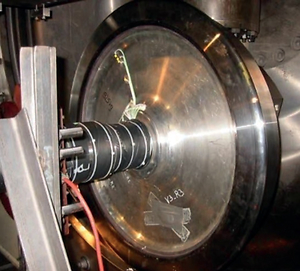Materials used in the construction of rail vehicle wheels
1
Politechnika Poznańska, Uczelnia, Polska
Submission date: 2021-09-29
Final revision date: 2021-11-28
Acceptance date: 2021-12-04
Online publication date: 2021-12-21
Publication date: 2022-01-05
Rail Vehicles/Pojazdy Szynowe 2021,4,14-24
KEYWORDS
TOPICS
ABSTRACT
The subject of this paper is the overview of materials used in the construction of rail vehicle wheels. The characteristics of this constructional element as well as its functional and material requirements are presented. In the following part, a description of commonly used carbon steels and alternative construction materials such as cast steels, ADI cast irons or aluminium alloys is presented, which are supposed to limit the wear of the wheel-rail contact pair and reduce the level of noise emission.
REFERENCES (21)
1.
Bracciali A., Masaggia S., Megna G., Veneri E.: Quiet and light spoked wheel centres made of Austempered Ductile Iron. 2019.
3.
Iwnicki S.: Handbook of railway vehicle dynamics, CRC Press, 2006. https://doi.org/10.1201/978042....
4.
Kwaśnikowski J., Małdziński L., Borowski J., Firlik B., et al.: Analiza przyczyn przyspieszonego zużycia powierzchni tocznych kół autobusu szynowego SA 108 (215M). Pojazdy Szynowe. 2007, no 2, 2007, s. 1–13.
5.
Lonsdale C., Bogacz R., Norton M., Application of Pressure Poured Cast Wheel Technology for European Freight Service. 9th World Conference on Railway Research. 2011.
6.
Mädler K.: On the Suitability of ADI as an Alternative Material for (Railcar) Wheels. GIFA. 1999, no 2, s. 267–272.
7.
Mädler K., Bannasch M.: Materials used for Wheels on Rolling Stock. 7th World Congress on Railway Research. 2006.
8.
Małecka J., Żak K.: Żeliwo ADI jako nowoczesny materiał konstrukcyjny - własności i zastosowanie. Międzynarodowe Sympozjum Metody Oceny Struktury oraz Własności Materiałów i Wyrobów. 2010.
9.
Megna G.: Application of Austempered Ductile Irons to structural components of railway vehicles. Universita Degli Studi Firenze. 2019.
10.
Mi G., Li C., Liu Y., Zhang B., et al.: Numerical simulation and optimization of the casting process of a casting-steel wheel. Engineering Review. 2013, no 33(2), s. 93–99.
12.
Słowiński M.: Czy koła szprychowe mają przyszłość w kolejnictwie?. Raport Kolejowy, no 1, 2021.
13.
Sokolnicki M.: Żeliwo ausferytyczne o zwiekszonych własciwościach wytrzymałościowych i plastycznych, przeznaczone na odlewy w pracy w warunkach dynaicznych obciążeń. Akademia Górniczo-Hutnicza w Krakowie. 2019.
14.
Szudyga M., Diagnozowanie metodą magnetyczn ą procesów zmęczeniowych stali stosowanej do kół i obręczy kolejowych zestawów kołowych. Politechnika Śląska. 2011.
16.
Thompson D., Gautier P.E.: Review of research into wheel/rail rolling noise reduction. Proceedings of the Institution of Mechanical Engineers, Part F: Journal of Rail and Rapid Transit. 2006, no 220(4), s. 385–408. https://doi.org/10.1243/095440....
17.
Weber F.-J.: Back to the future for spoked wheels, https://www.railjournal.com/in... [dostęp: 10/17/2020].
18.
Zhang H., Wu Y., Li Q., Hong X.: Mechanical properties and rolling-sliding wear performance of dual phase austempered ductile iron as potential metro wheel material. Wear. 2018, no 406–407, s. 156–165, https://doi.org/10.1016/j.wear....
19.
Norma PN-EN 13262+A1:2009: Kolejnictwo - Zestawy kołowe i wózki - Koła - Wymagania dotyczące wyrobu.
21.
Norma PN-84/PN-84027/06 Stal dla kolejnictwa. Obręcze do kół pojazdów szynowych. Gatunki.
We process personal data collected when visiting the website. The function of obtaining information about users and their behavior is carried out by voluntarily entered information in forms and saving cookies in end devices. Data, including cookies, are used to provide services, improve the user experience and to analyze the traffic in accordance with the Privacy policy. Data are also collected and processed by Google Analytics tool (more).
You can change cookies settings in your browser. Restricted use of cookies in the browser configuration may affect some functionalities of the website.
You can change cookies settings in your browser. Restricted use of cookies in the browser configuration may affect some functionalities of the website.



